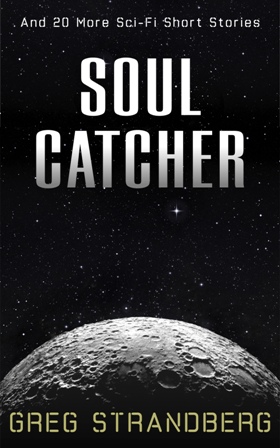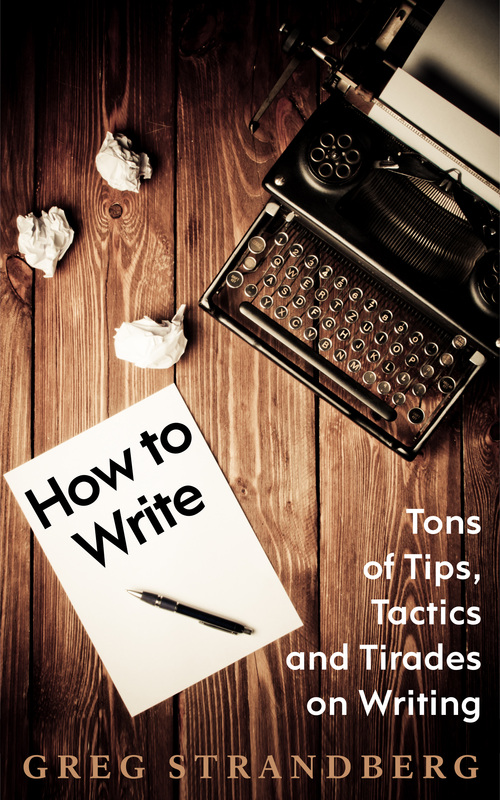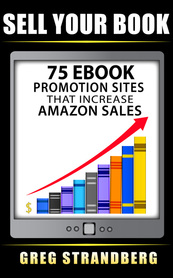
Part 1: Sacrificing Formatting Early
Part 2: Visual Representations of Your Novel's World
Part 3: Plotting With Your Table of Contents
Part 4: 7 Ways to Get Over That Writing Wall
Part 5: Editing and Proofing Your Novel Fast
Every writer wants to know how to write faster. I can write a novel a month, plan to do so most months this year, and have done so in the past.
I start my books in the middle of a scene with a line of dialogue and let the characters go. Oftentimes I'll have an idea of what's going to happen, but not always. I try to get one part of 5 to 7 chapters, which may not even be the first part.
After that it’s really just word count goals, like below:
- 10,000 Words: Once I can get up to 10,000 words I'll put my title page in there and start the TOC. I'll name and write chapter headings for the other 4 to 5 parts (sometimes just 2 for short books) and then write out a few paragraphs of ideas for those chapters. I'll color these in red or blue to separate them.
- 20,000 Words: When I get up to around 20,000 to 30,000 words I'll usually hit a wall. I'll give it a line-edit, usually giving myself an extra few thousand words as I write out some of those earlier colored paragraphs and add things here and there. I rarely get rid of anything.
- 50,000 Words: After that it's just filling out those parts until I get to my predetermined word count goal, which I usually set before even writing (these range from 20,000 words for short novelettes to 60,000 words or more for full novels). Personally I find that I hit a wall with my writing about every 20,000 words, so that’s a great time to go back and do a line-edit – it often gets you back on track!
I skip around a lot and write what feels write, leaving the boring stuff for last, which I then try my best to find ways not to include.
Sometimes I might need to do another line-edit when things stall again. After awhile thought it's just fighting to get those last bits and work things up.
I try to come up with and write the ending to my novels around 20,000 to 30,000 words in, and that way I'll know it and can go back and change it later. Also, it makes some of those holes in your story magically fill up!
Below are some basic things I do when I write novels. I follow many of these same things when I write non-fiction, although here we’ll really get into the formatting that I follow for all of my Amazon published novels. You can use this format for Amazon, or whatever works for you.
Making It Feel Like a Book Early
It’s a psychological hurdle you need to get over, and here are some things you can do to make you Work in Progress (WIP) seem like something that can actually get finished.
TOC and Title Page
Formatting for Amazon As You Go
Below are a couple pages of what my novels usually look like while I’m writing them. I really just write, hit ‘return’ a few times when I need a new paragraph, and continue.
Now, what I sacrifice in quality to gain time and words I then have to go and fix later. The next sections will detail how to make the above pile of words into a presentable and up-loadable Amazon Kindle novel.
Making Good Amazon First Line Indents
I’ll go through and delete out all those extra returns you see, then I’ll Select All and give it a First Line Indent. When I’m done with that I’ll go back to those parts I don’t want indented, like the title page and TOC, and get rid of it.
Indenting Your Amazon Titles Properly
Notice that the ‘Chapter 2’ title looks a little off, so I’ll go ahead and take out that first line indent on it to make it centered.
Now, today we pretty much just focused on what you can do to write quickly without worrying about all those formatting headaches while you’re doing it. Going back at a certain point to correct those is worth it, in my opinion, if it means you can get up to that 10,000 or 20,000 word mark.
Many people can’t do that, so I’d just sacrifice the good looking manuscript notion for substance. Remember, you’re the only one who’s going to see it, unless you write a blog post about it like I just did.
Tomorrow we’ll discuss Visual Representations of Your Novel and how this can help you get a lot more words out, especially after you’ve hit a wall with your writing.
You Might Also Like
Self-Publishing on Amazon
Saying to Hell With Your eBook Prices
Three Months of Amazon Perma-Free Results
Dealing With a BookBub Rejection
eBook Marketing: Bringing the Dead Back to Life
The Problems Discounted eBooks Pose
Your 2014 Self-Publishing Game Plan
SEO, Self-Publishing, and 1980s Kevin Bacon Movies

















































































 RSS Feed
RSS Feed